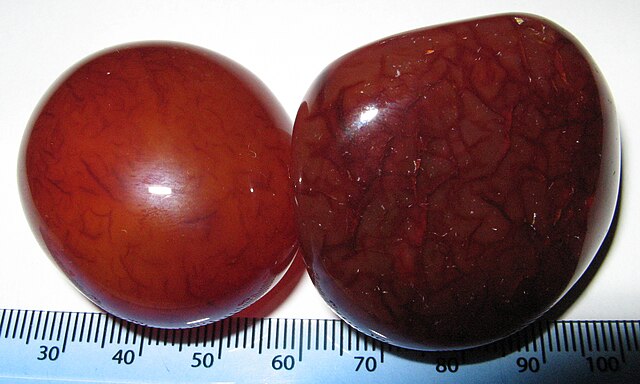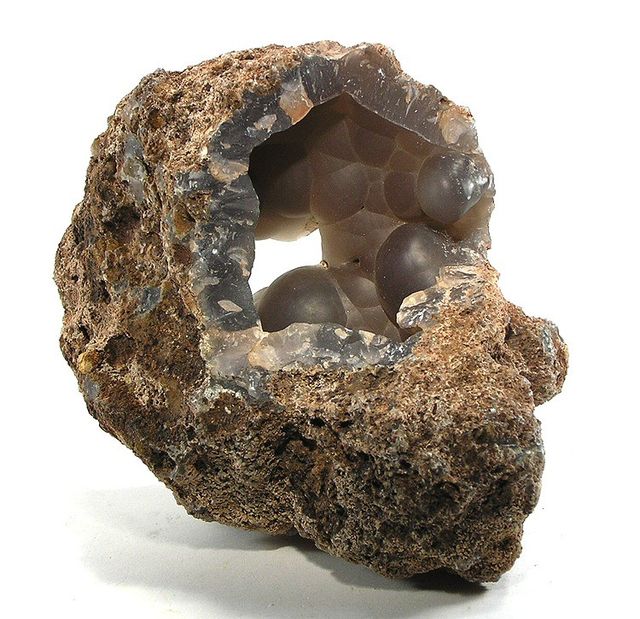Carnelian is a brownish-red mineral commonly used as a semiprecious stone. Similar to carnelian is sard, which is generally harder and darker; the difference is not rigidly defined, and the two names are often used interchangeably. Both carnelian and sard are varieties of the silica mineral chalcedony colored by impurities of iron oxide. The color can vary greatly, ranging from pale orange to an intense almost-black coloration. Significant localities include Yanacodo (Peru); Ratnapura ; and Thailand. It has been found in Indonesia, Brazil, India, Russia (Siberia), and Germany. In the United States, the official State Gem of Maryland is also a variety of carnelian called Patuxent River stone.
Carnelian
Maryland carnelian, also called "Patuxent River Stone", cut and illuminated to display colors and structure.
Carnelian intaglio with a Ptolemaic queen, Hellenistic artwork, Cabinet des Médailles
Necklace with gold beads and carnelian beads, Cypriot artwork with Mycenaean inspiration, c. 1400–1200 BC.[citation needed] From Enkomi. British Museum.
Chalcedony ( kal-SED-ə-nee, or KAL-sə-doh-nee) is a cryptocrystalline form of silica, composed of very fine intergrowths of quartz and moganite. These are both silica minerals, but they differ in that quartz has a trigonal crystal structure, while moganite is monoclinic. Chalcedony's standard chemical structure (based on the chemical structure of quartz) is SiO2 (silicon dioxide).
Chalcedony
A rare pseudomorph of a spiral Turritella-like snail shell that has been replaced by chalcedony
Agate
Carnelian




![Necklace with gold beads and carnelian beads, Cypriot artwork with Mycenaean inspiration, c. 1400–1200 BC.[citation needed] From Enkomi. British Museu](https://upload.wikimedia.org/wikipedia/commons/thumb/0/00/Cornelian_necklace_BM_GR1897.4-1.623.jpg/640px-Cornelian_necklace_BM_GR1897.4-1.623.jpg)


